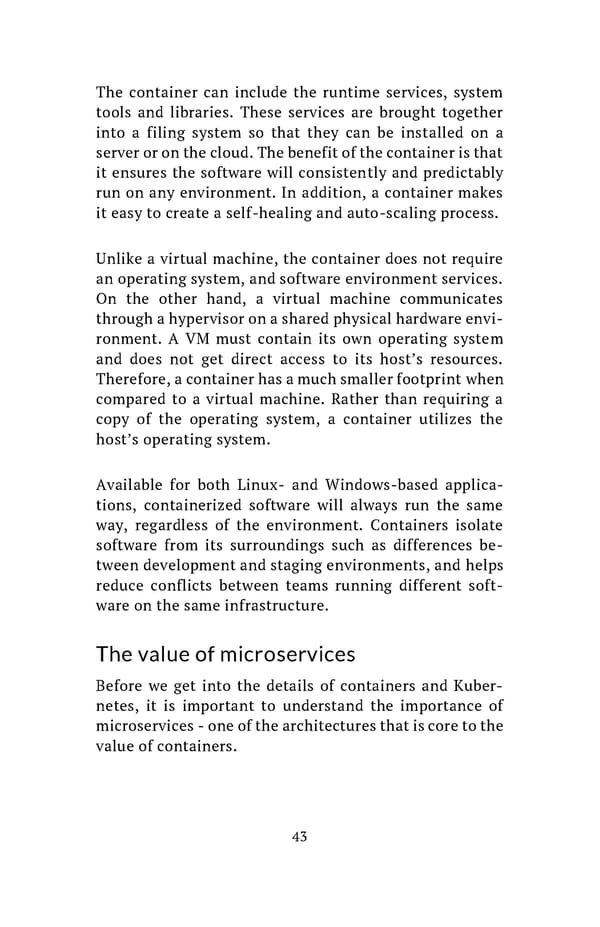The container can include the runtime services, system tools and libraries. These services are brought together into a filing system so that they can be installed on a server or on the cloud. The benefit of the container is that it ensures the software will consistently and predictably run on any environment. In addition, a container makes it easy to create a self-healing and auto-scaling process. Unlike a virtual machine, the container does not require an operating system, and software environment services. On the other hand, a virtual machine communicates through a hypervisor on a shared physical hardware envi- ronment. A VM must contain its own operating system and does not get direct access to its host’s resources. Therefore, a container has a much smaller footprint when compared to a virtual machine. Rather than requiring a copy of the operating system, a container utilizes the host’s operating system. Available for both Linux- and Windows-based applica- tions, containerized software will always run the same way, regardless of the environment. Containers isolate software from its surroundings such as differences be- tween development and staging environments, and helps reduce conflicts between teams running different soft- ware on the same infrastructure. The value of microservices Before we get into the details of containers and Kuber- netes, it is important to understand the importance of microservices - one of the architectures that is core to the value of containers. 43
 Building Cloud Native Apps Painlessly Page 48 Page 50
Building Cloud Native Apps Painlessly Page 48 Page 50